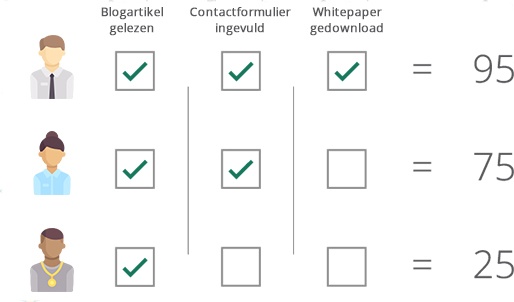What is a lead?
Lead meaning according to Monkeybridge
A lead is a website visitor who is in the third stage of the buyer journey, after the ‘suspect’ and ‘prospect -phase’. The prospect turns into a lead as soon as the visitor has entered into a conversion. At this point it is possible to specifically track that lead, collect information and assign the visitor a score. The lead phase is the final phase of the buyer journey. Once the lead makes a purchase, the visitor turns into a customer and is at the beginning of the customer journey.
View the entire process below for a clear overview of the customer experience:

Types of leads
Not all leads are equally interesting. A prospect may have only registered for the newsletter. This does make it a lead, but does not mean that the user is immediately prepared to make a purchase. There is a difference between Sales-ready leads (SQLs) and Marketing-ready leads (MQLs).
To make this distinction, a score is given to the leads through lead qualification. This score increases as the lead performs more interesting actions. Below is a lead qualification example schematically detailed:

Collect leads
Every website is only useful if it produces leads and customers. The customers can do both online and offline conversions. The leads are always generated online. There are plenty of ways to collect leads on every website. This can be done very ‘basically’ by means of a contact form on the contact page of your website.
A more lucrative – but also labor-intensive – way to collect leads is with an inbound marketing strategy. With this strategy you map the entire customer journey and show the right content, in the right place and at the right time. At an advanced stage, inbound marketing or lead generation is often combined with lead qualification and automated through marketing automation.

